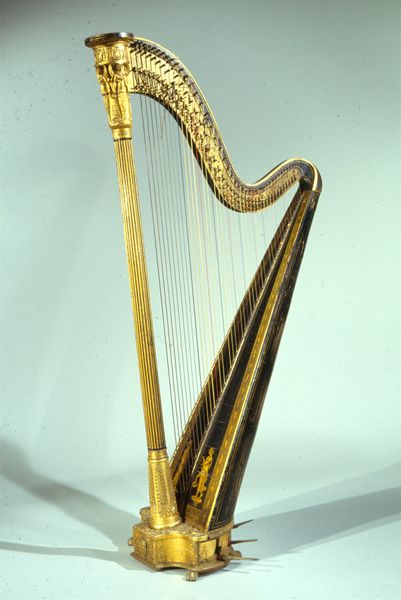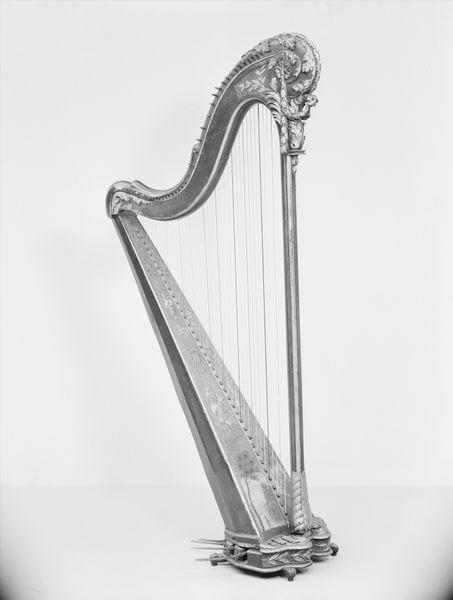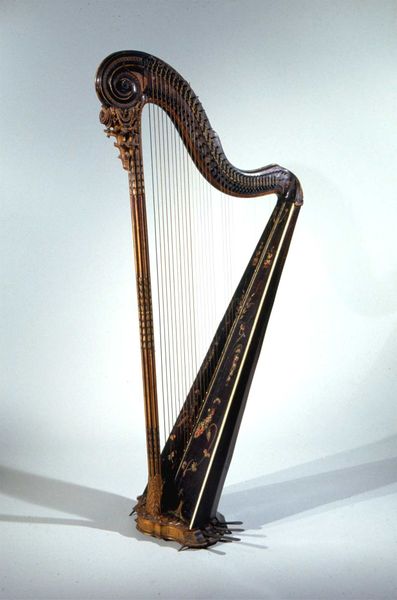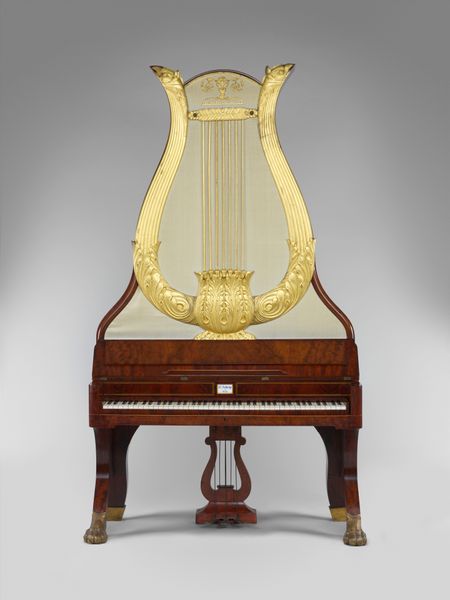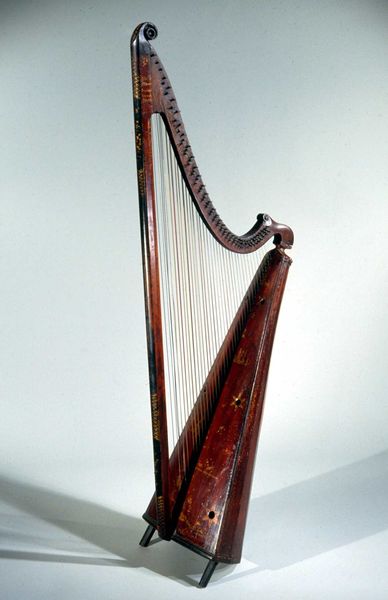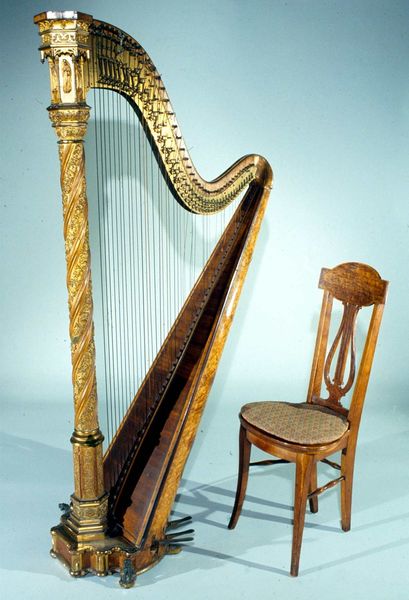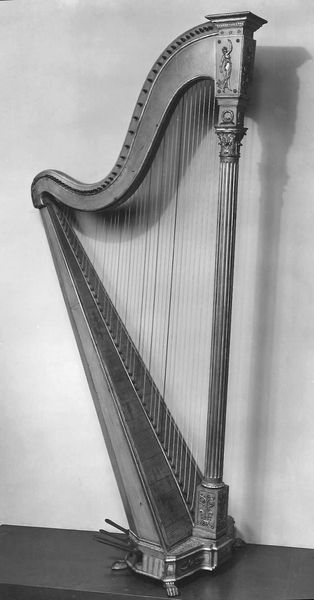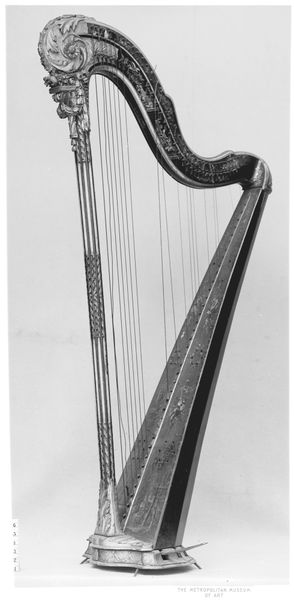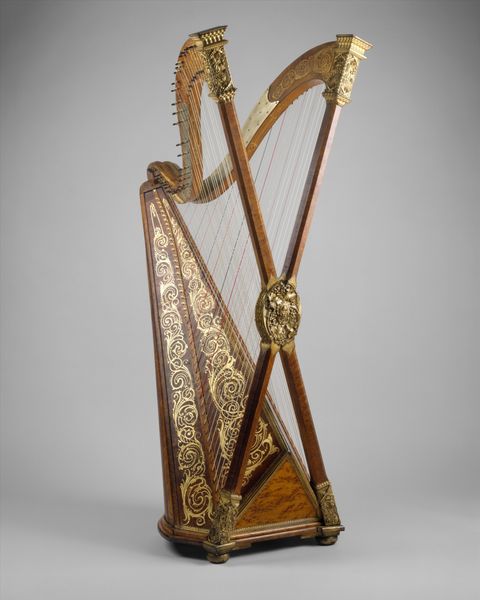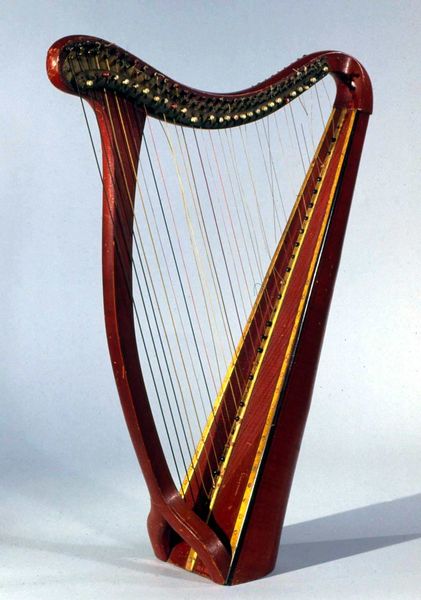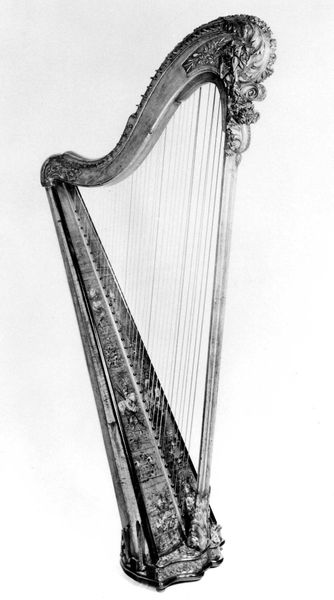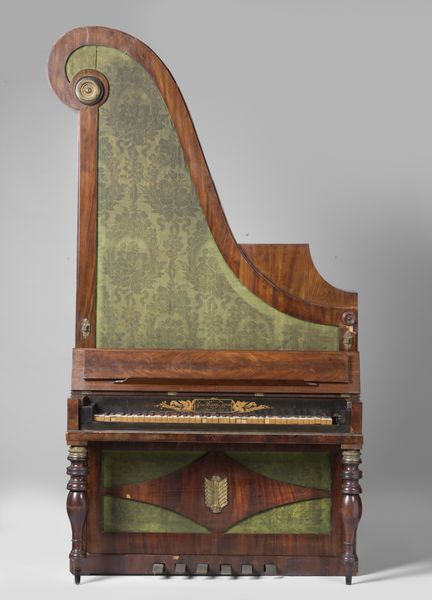
Dimensions: height 170 cm, width 114 cm
Copyright: Rijks Museum: Open Domain
This harp was crafted by Cousineau Père et Fils, and what immediately captures our attention is the intricate volute at the top, adorned with gilded foliage. The volute, a spiral motif, isn't merely decorative; it echoes the ancient Ionic columns, evoking a sense of classical harmony and order. This symbol transcends its architectural origins, reappearing in various forms across cultures. Think of the curled tendrils in Renaissance paintings, or the swirling patterns in ancient pottery. It's as though this shape carries a primal charge, resonating with our subconscious understanding of growth, movement, and continuity. Consider the emotional weight of music itself. The harp, with its elegant form and delicate strings, has long been associated with ethereal beauty and emotional catharsis. It serves not just as an instrument, but as a vessel through which powerful emotional states are channelled. Its cyclical progression, with its ability to evoke profound emotional responses, solidifies its place as a potent force in our collective memory.
Comments
rijksmuseum about 2 years ago
⋮
Cousineau improved the harp’s pedal mechanism which shortens the playing length of the strings and makes it possible to play chromatic scales. Cousineau was the harp teacher of the French queen Marie-Antoinette, who set the trend for this instrument. Indeed, from the late 18th century, the harp became one of the most popular instruments for women among the aristocracy and the bourgeoisie.
Join the conversation
Join millions of artists and users on Artera today and experience the ultimate creative platform.
